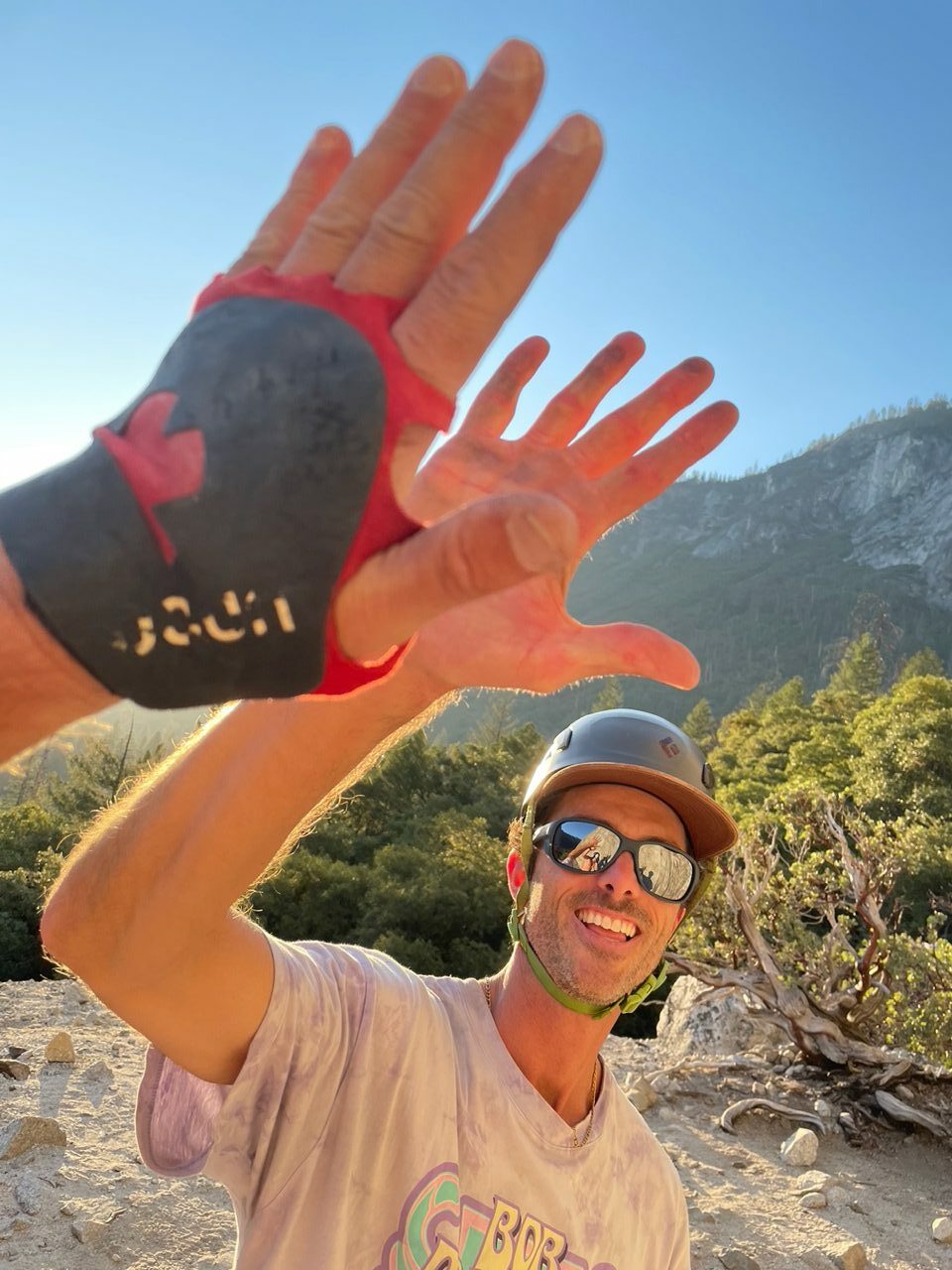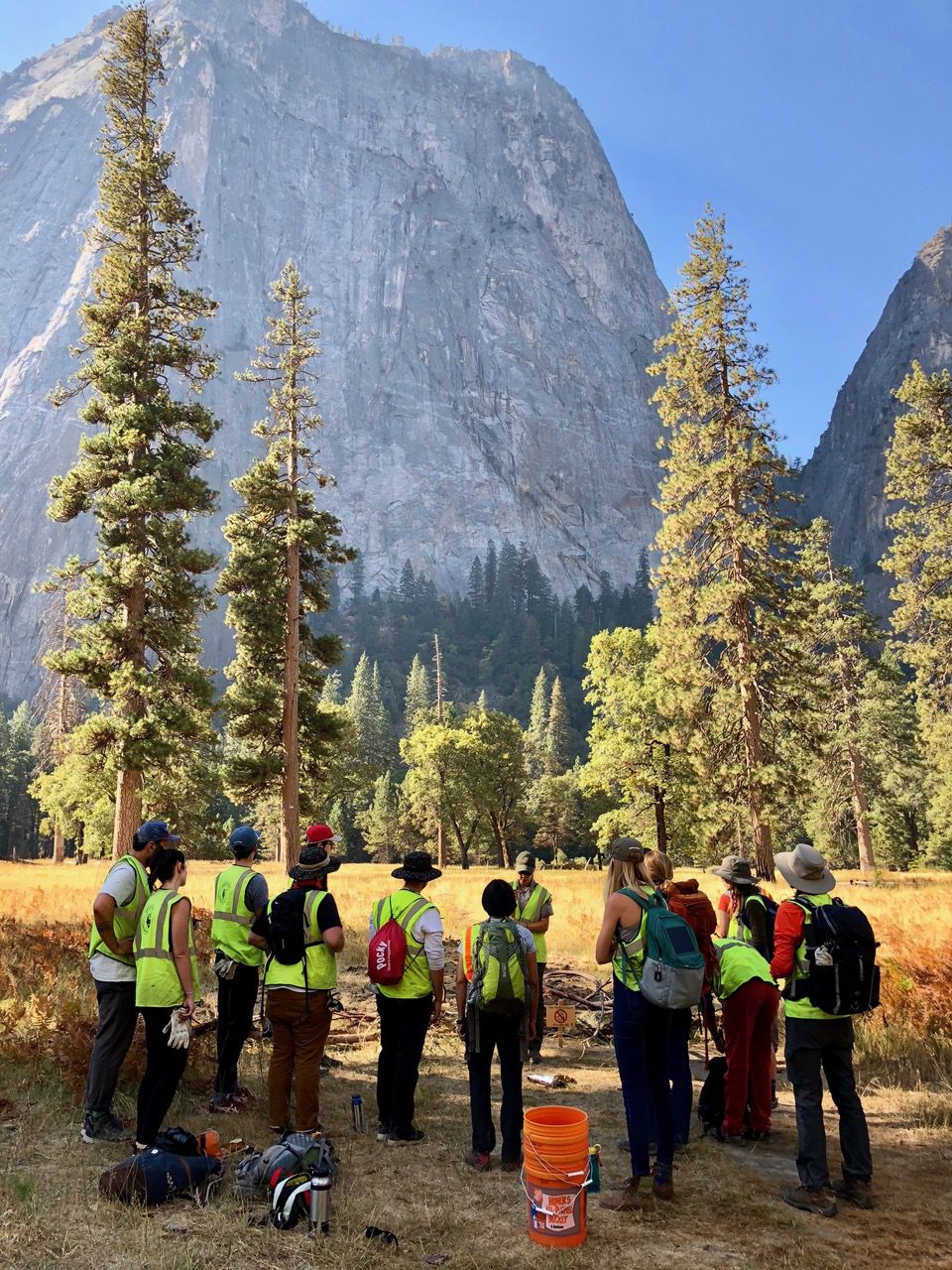Parks Project: CEO, Climber, and Book Author Keith Eshelman
With merchandise stocked at U.S. national parks and a pledge to give back 25 percent of profit, Parks Project has so far donated millions for vital projects
 Photo by: Keith Eshelman
Photo by: Keith Eshelman
“Ten years ago, my daughter came into the world, and we took some time to go nest in Big Sur, California,” Keith Eshelman says between meetings at his company Parks Project.
“I had her on my chest like in one of those BabyBjörn carriers, and we went to hike a trail, and it was closed because it hadn’t been maintained, was rutted out, and overgrown. It was a hike I had done before, and then this generational moment kicked in for me. I asked how I would leave all the trails, parks, and places I recreate for the next generation.”
Back then, Keith worked at Toms Shoes, and he applied that same make a great product and give back mentality toward helping the places he loved. “I went off into a deep study of the state of the parks because I use them a ton. I learned that volunteers maintain trails. Soon, volunteering brought me to meeting rangers and understanding projects.”

Beginning in 2014, with a smile and a wheelbarrow marked ‘Trail Crew’ stenciled on the side, Keith carted shovels for trail work in the Santa Monica mountains west of LA. Frustrated with the environmental damage from heavy foot traffic and lack of trail maintenance, he organized a few friends from Toms, and those people brought their friends. Keith discovered the collective power of community and volunteerism. “We got some people out a couple of times in a row and, with this small group, we called it Parks Project.”
“Because I was coming from Toms, I was, like, maybe we can make cool products to give back and fund projects. That was the birth of the idea of the social enterprise.”
Soon, Keith began formalizing what would become Parks Project, where he could spearhead trail projects, advocacy, and education — and even fund these events with 25 percent of the profit from t-shirts and assorted merch sales sold in parklands. Within a few years, Parks Project officially partnered with National Parks and hired four full-time employees to manage shipments and all other businesses. In 2016, Parks Project contributed $20,000 to parklands; in 2018, they partnered with REI and donated more than $300,000. In 2021, they donated one million dollars; the following year, they doubled their donation to two million.
Today, if you walk into the Curry gift shop Yosemite, displayed on the shelves next to the s’mores and Tasty Bites, you can’t miss Parks Projects T-shirts, hats, sweatshirts, socks, and mugs.
Keith has volunteered at five Facelift events in Yosemite. During these annual cleanup projects, Parks Project has assisted in removing social trails and conducting park maintenance. “Trails get washed out. Our work involves trimming brush back and maintenance. I’ve done habitat restoration, trail work, and non-native plant removals. I’ve removed social trails from Yosemite Valley, which become these crazy networks that trample the meadows.”
He adds, “I’ve worked over 100 events. I’d say at over 40 parks.”

Over eight years with Parks Project, Keith has volunteered at events nationwide, working on trails and other projects. His visits to Yosemite became more frequent, and inspired by the walls, he knew he needed to climb them. In 2021, we were introduced through the Yosemite Climbing Association and struck up a friendship that grew over climbs and e-bike rides in the park and surrounding Sierra foothills. As we rode and climbed, we talked about his work with the Parks Project and what he wanted to climb next. With a background in skating and surfing and a strong work ethic, he quickly rose the grades at his local stomping grounds of Joshua Tree to Yosemite from 5.7 to 5.10. Climbing, surfing, biking, and park volunteerism are Keith’s priorities.
“Santa Monica Mountains and the surrounding area have great climbing, surfing, and biking. That’s my portal right there. The lifestyle I’ve built is a straddle of city and wild, and I live right on the edge of the parklands. But I can go 10 minutes away into a major metropolitan city.”
He ensures he gets time outside between Zoom meetings, emails, and profit and loss reports. “I’m taking climbing deeper for sure,” he says after finishing a surf session in Venice. “A few days ago, I did a 1,800 foot 5.9 on Solar Slab in Red Rock, Nevada. I still feel wrecked from that. All I want to do is long trad routes.”
Under Keith’s direction, Parks Project contributions include the Yosemite Conservancy, National Park Foundation, National Parks Conservation Association, and more. In Lake Tahoe in 2023, they contributed $10,000 toward the Rim Trail. “Each park has their unique project,” says Keith, adding that they donate funds quarterly.
With Parks Project locking him to his desk, Keith still heads out to the Santa Monica Mountains every chance he gets. “I’m still jamming up into those trails, often, trail running, mountain biking.”
In addition to cotton tees, sweatshirts, and mugs, Parks Project also publishes books.

Parks Project Books
Working with gestalten publishing, specializing in aesthetic, photo-rich titles, Parks Project published two titles. The first, in 2022, was Parklands: Trails and Secrets, which takes readers on a visual tour of everywhere from Yosemite to Big Sur to Death Valley, emphasizing low-impact travel. The book helps you plan your ecological trip with insider tips. This year, after a year of work, Keith released Parklife Hideaways: Cottages and Cabins in North American Parklands.
One climbing area he included in the book is Lake Tahoe. “There’s this snowboarder named Mike Basich,” Keith says. “He and his friends brought up a bunch of river stones to construct an off-the-grid stone cabin in the Sierra. Mike’s somebody who has this creative past and took it into a cool, naturalistic integration into nature. There’s a bunch of unique stories like that in Cottages And Cabins.”
The description reads:
From cozy cabins and cottages to seaside shacks―within or with direct views onto the stunning natural landscapes of North America’s national parks, forests, and coastlines―we look at a variety of inspirational ‘parkitecture’ to appeal to dreams of a life off-grid.

In the chapter Cultivating a Low-Impact Lifestyle, “I try to build with materials from as close to here as possible to have the smallest environmental footprint possible,” says Dwver Haney of his 26-acre permaculture farm in Northern Vermont. “Living a sustainable lifestyle and translating that ethos to the home requires constant self-assessment and a close relationship with the environment.”
At 256 color-rich pages and $60, Parklife Hideaways: Cottages and Cabins In North American Parklands is available January 23, 2024.


